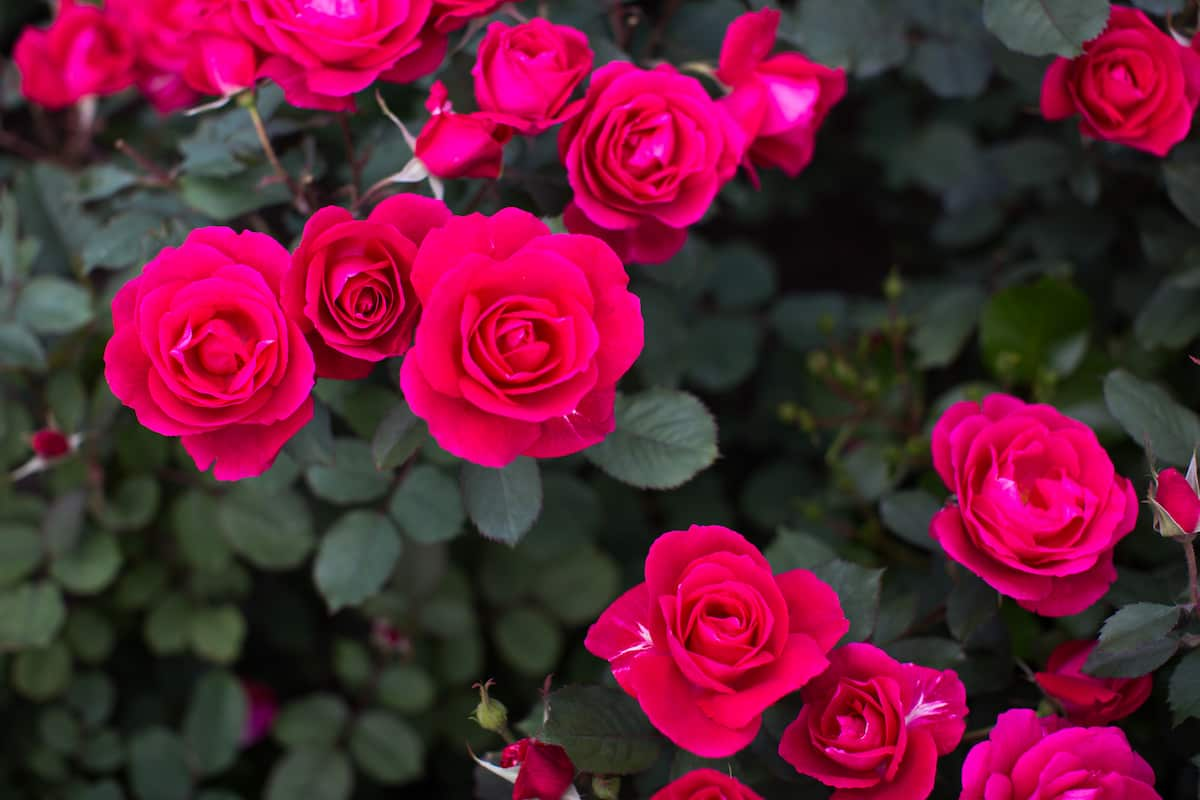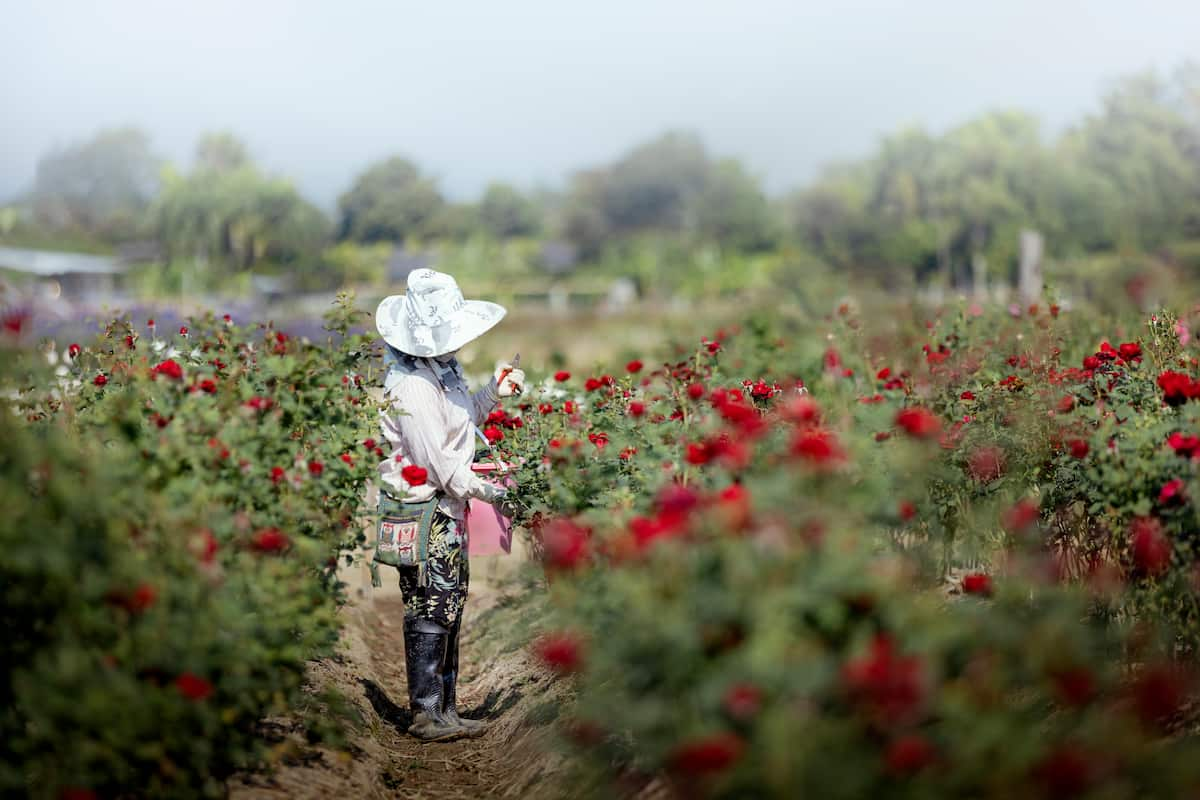Welcome to this comprehensive report on the 1 Acre Rose Cultivation Project, which provides valuable insights into the production cost and profit of cultivating roses on a one-acre plot of land. As the demand for roses continues to grow worldwide, this project presents a profitable opportunity for those interested in starting a flower cultivation business.

This report will discuss the soil and climate requirements for rose cultivation, the cost of production, expected yield and profit, marketing and sales strategies, and the challenges and risks associated with rose cultivation. By the end of this report, you will better understand the potential profitability of cultivating roses on a commercial scale.
1-Acre Rose Cultivation Project Report
Introduction to Rose Farming
Roses are the most popular flowers in the world, grown in different climatic conditions. They can be found in shrub, climber, and trembler forms, and their thorniness depends on the variety. Commercial cultivation of roses can be highly profitable as there is a growing demand for rose flowers for various purposes such as cutting flowers, floral arrangements, making bouquets, and gifting, as well as for manufacturing rose-based products like rose water, perfumes, and cosmetics. In India, rose farming is becoming increasingly popular due to its higher commercial gains and increased demand for cut flowers.
India’s major rose-farming states are Karnataka, Tamil Nadu, Bihar, Uttar Pradesh, West Bengal, Maharashtra, Haryana, Gujarat, Punjab, Jammu and Kashmir, Madhya Pradesh, and Andhra Pradesh. The roses are marketed as loose or cut flowers suitable for garland making. Rose farming can be highly profitable for farmers willing to invest in cultivation and market their products effectively. Roses can be grown successfully commercially with the right climate, soil, and farming techniques.
Market and Demand for Rose Cultivation
- The floriculture market reached a value of INR 1870.6 Crores in 2020(India).
- The floriculture industry is expected to grow at a CAGR of around 19.5% in 2022-2027, reaching a value of around INR 5460.4 Crores by 2026.
- The consumption of exotic flowers is increasing in India, particularly in metropolitan cities like Delhi, Bengaluru, Mumbai, Kolkata, and Hyderabad.
- Demand for exotic flowers increases during festivals, wedding seasons, birthdays, anniversaries, Valentine’s Day, and religious ceremonies.
- The growing demand from the decoration industry is driving the Indian exotic flowers industry due to rapid urbanization and rising demand for celebration.
- The gifting industry in India is growing rapidly, including personal, festival, and corporate gifting, which is boosting the growth of the exotic flowers industry.
- The wedding season further boosts the demand for exotic flowers in India.
Best Package and Practices for Rose Farming
- Adequate sunlight: The site selected should receive a good amount of sunlight for at least 5-6 hours daily.
- Soil type: Well-drained loamy soil with a pH range of 6.0-7.0 and good organic matter content is ideal for rose cultivation. Sandy soil is the best rooting medium for roses.
- Climate: Day temperatures of 26°C and night temperatures of 15°C are ideal for growing rose plants.
- Land preparation: The plot should be well plowed, and circular pits of 75-90cm in diameter and 60-75cm deep should be prepared. Adequate amounts of farmyard manure should be added to each pit.
- Propagation: Rose is mainly propagated by cuttings and budding. T-budding is considered the best for the propagation of roses.
- Planting: While planting, 4-8 kg of well-rotted cow dung manure or organic manure and a handful of bonemeal should be added in each pit. Well-rooted cuttings are planted in each pit, with roots widely spread. In the case of budded plants, the bud union should be kept above ground level.
- Spacing: Proper spacing is important for plant growth, avoiding competition for space, sunlight, and nutrients. Spacing varies with the variety used for planting. Cultivars like Queen Elizabeth, Happiness, and Super Giant grow vigorously, requiring wider spacing.
- Proper drainage: Roses are highly susceptible to waterlogged conditions, so proper drainage is essential.
- Protection from wind: Roses are easily damaged by strong winds, so planting windbreak trees to protect them can be useful.
- Spacing: Proper spacing is important to avoid competition for space, sunlight, and nutrients.
- Irrigation: Regular watering is necessary until the cuttings or plants are well-established.
- Nutrients: Roses are heavy feeders of nutrients, and 4-8 kg of well-rotted cow dung manure per plant is recommended.
- Disease and Pest Control: Rose is a hardy plant. It is still attacked by dieback, rust, black spot, powdery mildew, and some viral diseases. The important pests of roses are white ants, chafer beetle, digger wasp, aphids, thrips, mealy bugs, and nematodes.
- Harvesting: It should be done early morning or late evening to reduce transpirational water loss. Harvesting is done at different stages depending upon the purpose for which it is harvested. Cut flowers for the local market are harvested when the outer petals start curling outwards, while cut flowers for distant markets are harvested at the tight bud stage with buds showing full but petals not unfolded.
- Special practices: Pinching and deshooting are some special practices used to manage plant height and encourage lateral branching.
In case you missed it: How to Grow Roses in Greenhouse: A Step-By-Step Guide from Planting Stem Cuttings to Harvest

Best Rose High Yield Variety for Rose Cultivation
Wide rose varieties can yield high and produce good quality flowers. Some popular high-yielding varieties include Hybrid Tea Roses, Floribunda Roses, Grandiflora Roses, and Climbing Roses. The best variety for rose cultivation depends on climate, soil conditions, and market demand.
Cost of Cultivation for 1-Acre Rose Cultivation
The cost of cultivation for 1-acre rose cultivation in protected field conditions depends on various factors such as land preparation, planting material, irrigation, fertilizer application, labor cost, pest and disease control, harvesting, and marketing.
- Land preparation: Rs. 15,000 – 20,000 or USD 200-300 per acre
- Plant material: Rs. 50,000 – 70,000 or USD 700-1000 per acre
- Irrigation: Rs. 15,000 – 20,000 or USD 200-300 per acre
- Fertilizers and plant protection chemicals: Rs. 50,000 – 70,000 or USD 700-1000 per acre
- Labor: Rs. 40,000 – 50,000 or USD 550-700 per acre
- Transportation: Rs. 10,000 – 15,000 or USD 150-200 per acre
- Marketing: Rs. 15,000 – 20,000 or USD 200-300 per acre
Therefore, the total cost of cultivation for 1-acre rose cultivation in open field conditions ranges from Rs. 1.5 to 2.0 lakhs or USD 2000-3000, depending on the location and other factors.
Total Returns from 1 Acre Rose Cultivation
The total returns from 1 acre of rose cultivation in protected field conditions will depend on various factors such as the variety of roses grown, the local market demand, the yield per acre, and the price per kg of roses. Assuming an average yield of 10,000–15,000 kg per acre and an average price of INR 40 per kg in the local market, the total revenue generated from 1 acre of rose cultivation in India would be INR 6,00,000 ($8,000).
Net profit from 1-Acre Rose Cultivation
The net profit from 1-acre rose cultivation in protected field conditions would be around Rs. 4.0 to 4.5 lakhs or USD 5500-6000, after deducting the total cost of cultivation from the total revenue generated. However, this may vary depending on the location, yield, and market conditions.
Challenges and Risks in Rose Cultivation
- Diseases and pests: Roses are prone to a range of diseases and pests, which can cause significant damage to the crop.
- Weather conditions: Unpredictable weather patterns, such as drought or excessive rainfall, can affect the quality and quantity of the rose crop.
- Market fluctuations: Fluctuations in market demand and prices can affect the profitability of rose cultivation.
- High competition: There is intense competition in the rose market, making it challenging for growers to maintain their market share.
- Labor-intensive: Rose cultivation is labor-intensive and requires skilled laborers, which can be difficult to find and manage.
In case you missed it: How to Plant Drift Roses: A Step-by-Step Growing Guide for Beginners

Conclusion
1-acre rose cultivation in open field conditions can be a profitable venture. The production cost ranges from Rs. 1.5 to 2.0 lakhs, while the net profit can be up to Rs. 2.5-3.5 lakhs, depending on various factors.
- Feed Your Flock for Less: Top 10 Tips to Save on Chicken Feed
- Ultimate Guide to Ossabaw Island Hog: Breeding, Raising, Diet, and Care
- Hatching Answers: The Top 10 Reasons Your Chickens Aren’t Laying Eggs
- Eggs and Economics: Breaking Down the Cost of Raising Backyard Chickens
- Defend Your Greens: Proven Methods to Keep Iguanas Out of Your Garden
- Ultimate Guide to Cinnamon Queen Chicken: A Comprehensive Guide for Beginners
- Ultimate Guide to California Tan Chicken: Breeding, Raising, Diet, Egg-Production and Care
- Ultimate Guide to Marsh Daisy Chicken: Breeding, Raising, Diet, and Care
- 10 Types of Chicken Farming Businesses You Can Start for Profits